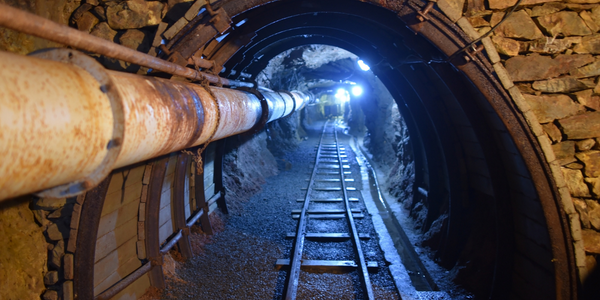Download PDF
Brazil’s REDE-LAB Identifies Illicit Assets with IBM Watson Explorer
Technology Category
- Analytics & Modeling - Big Data Analytics
- Analytics & Modeling - Data Mining
Applicable Industries
- Finance & Insurance
- Mining
Applicable Functions
- Quality Assurance
Use Cases
- Asset Health Management (AHM)
- Time Sensitive Networking
Services
- Data Science Services
- Testing & Certification
The Challenge
Brazil’s Ministry of Justice, specifically the Department of Assets Recovery and International Legal Cooperation, was tasked with the challenge of identifying and investigating the illicit proceeds of criminal activities such as corruption, organized crime, drug trafficking, and money laundering. The department created the Technology Laboratory Against Money Laundering (LAB-LD) to support complex investigations into corruption and money laundering. As of 2014, there are 43 laboratories across Brazil, which make up the Federal Laboratory Network Against Money Laundering (REDE-LAB). These laboratories analyze a vast amount of data to uncover and freeze illicit assets. However, the process of analyzing the data was complex and time-consuming, often taking months and thousands of person-hours. The challenge was further compounded by the fact that 60 percent of the data came from structured sources such as databases and spreadsheets, and the remaining 40 percent from unstructured sources, such as social media and email.
About The Customer
The customer in this case study is Brazil’s Ministry of Justice, specifically the Department of Assets Recovery and International Legal Cooperation. Established in 2003, this department is responsible for recovering the proceeds of corruption, organized crime, drug trafficking, and money laundering. In 2007, the department created the Technology Laboratory Against Money Laundering (LAB-LD) to support complex investigations into corruption and money laundering. As of 2014, there are 43 laboratories across Brazil, which make up the Federal Laboratory Network Against Money Laundering (REDE-LAB). These laboratories analyze a vast amount of data to uncover and freeze illicit assets.
The Solution
To automate and dramatically accelerate its analytics processes, REDE-LAB selected IBM Watson Explorer, delivered by IBM Business Partner Via Appia. Watson Explorer was implemented and configured to mine a comprehensive set of source data. At the start of an investigation, Watson Explorer builds a staging area to collate all of the pertinent data. By assessing the quality of the data in motion, terabyte-sized hard disks can be reduced to only a few gigabytes of relevant data. After indexing the remaining data, the solution enables the laboratories to perform keyword and semantic searches, regardless of whether the underlying data is in a structured or unstructured format. This has freed investigators to spend less time identifying the relevant data, and more time on the all-important analysis. The solution also uses TheXML software and search appliance from Via Appia to build ‘ontologies’ for IBM Watson Explorer at the start of investigations.
Operational Impact
Quantitative Benefit
Related Case Studies.

Case Study
Underground Mining Safety
The goal was to produce a safety system to monitor and support underground mining operations; existing systems were either too simple (i.e. phone line) or overly complex and expensive, inhibiting deployment, and providing little-to-no support in event of an accident. Given the dangerous nature of the mining work environment and the strict regulations placed on the industry, the solution would have to comply with Mine Safety and Health Administration (MSHA) regulations. Yet the product needed to allow for simple deployment to truly be a groundbreaking solution - increasing miner safety and changing daily operations for the better.

Case Study
Mining Firm Quadruples Production, with Internet of Everything
Dundee Precious Metal’s flagship mine, in Chelopech, Bulgaria, produces a gold, copper, and silver concentrate set a goal to increase production by 30%. Dundee wanted to increase production quality and output without increasing headcount and resources, improve miner safety, and minimize cost.

Case Study
Fastenal Builds the Future of Manufacturing with MachineMetrics
Fastenal's objective was to better understand their machine downtime, utilization, quality issues, and to embrace cutting-edge manufacturing technology/process improvement capabilities to bring their team to the next level. However, there was a lack of real-time data, visualization, and actionable insights made this transition impossible.

Case Study
Real-time In-vehicle Monitoring
The telematic solution provides this vital premium-adjusting information. The solution also helps detect and deter vehicle or trailer theft – as soon as a theft occurs, monitoring personnel can alert the appropriate authorities, providing an exact location.“With more and more insurance companies and major fleet operators interested in monitoring driver behaviour on the grounds of road safety, efficient logistics and costs, the market for this type of device and associated e-business services is growing rapidly within Italy and the rest of Europe,” says Franco.“The insurance companies are especially interested in the pay-per-use and pay-as-you-drive applications while other organisations employ the technology for road user charging.”“One million vehicles in Italy currently carry such devices and forecasts indicate that the European market will increase tenfold by 2014.However, for our technology to work effectively, we needed a highly reliable wireless data network to carry the information between the vehicles and monitoring stations.”

Case Study
Joy Mining Systems
Joy equipment faces many challenges. The first is machine integration and control. The business end of the machine has a rapidly-spinning cylinder with 6-inch diamond-studded cutting teeth. It chews through rock at rates measured in tens of tons per minute. The system grinds through the rock in front, creating a rectangular mine tunnel. Hydraulic lifters support the ceiling as the machine moves forward. Automated drills and screws drive 3-ft long screws into the ceiling to stabilize it. The rock and coal fall into a set of gathering "fingers" below the cutting cylinder. These fingers scoop up the rock and coal and deposit it onto a conveyor belt. The conveyor passes under the machine and out the back. A train of conveyor belt cars, up to a mile long, follows the cutter into the mine. The rock shoots along this train at over 400 feet per minute until it empties into rail cars at the end. Current systems place an operator cage next to the cutter. Choking dust (potentially explosive), the risk of collapse and the proximity of metal and rock mayhem make the operator cage a hazardous location.

Case Study
Safety First with Folksam
The competitiveness of the car insurance market is driving UBI growth as a means for insurance companies to differentiate their customer propositions as well as improving operational efficiency. An insurance model - usage-based insurance ("UBI") - offers possibilities for insurers to do more efficient market segmentation and accurate risk assessment and pricing. Insurers require an IoT solution for the purpose of data collection and performance analysis





